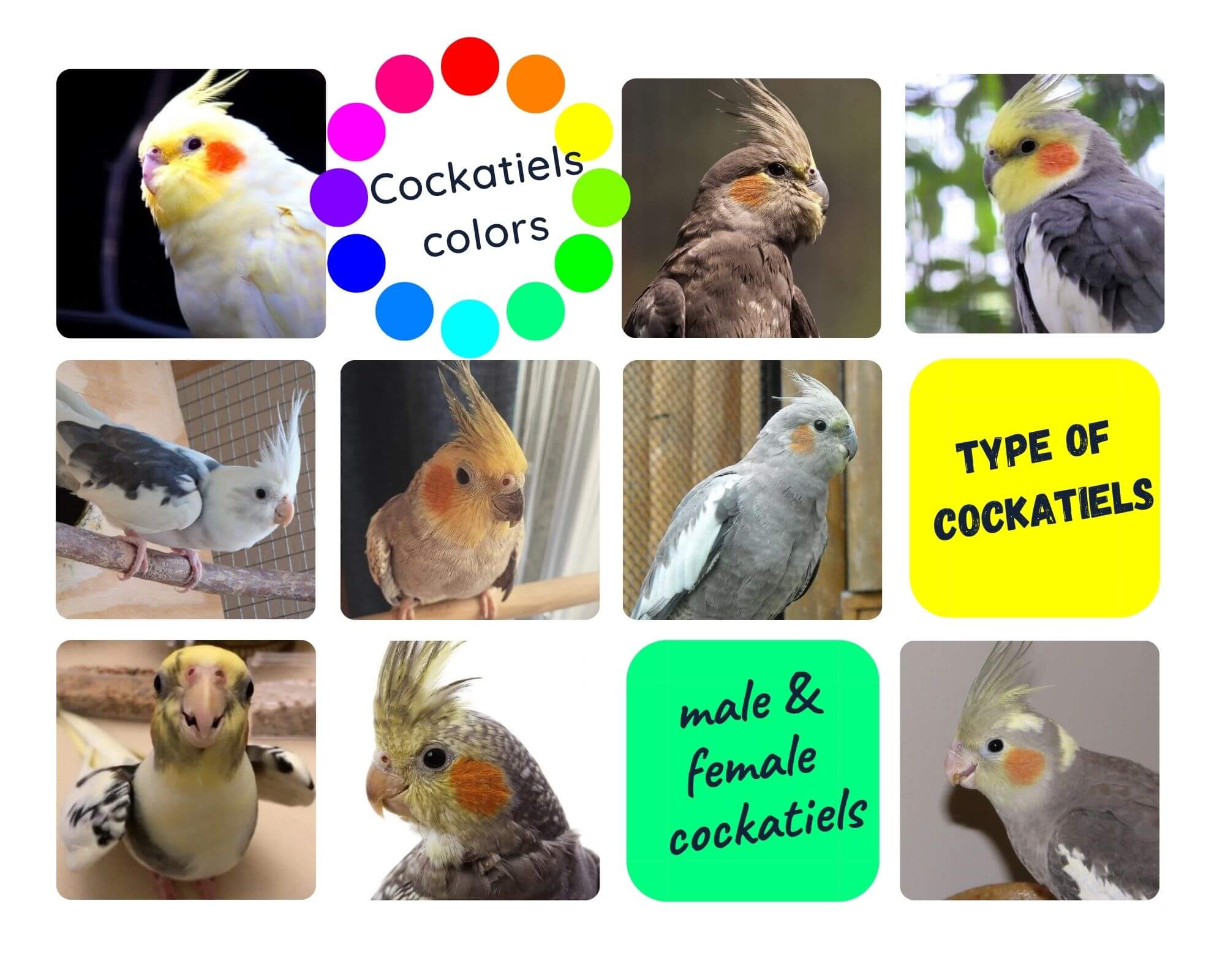
The science of genetics cockatiel colors discusses the heredity of color variation in feathers cockatiels, Nymphicus hollandicus. Color mutations are a natural but very rare phenomenon that occurs in captivity or in the wild.
Cockatiel colors: Gray Cockatiel, Yellowface Cockatiel, Whiteface Cockatiel, Pearl Cockatiel, Silver Cockatiel, Fallow Cockatiel, Pied Cockatiel, Lutino Cockatiel, Blue Cockatiel.
- Size and weight: L: 29-35cm; Weight: M: 80-100 g
- Longevity: 15 to 20 years
- Tail: 14 to 16 cm.
- Sexual maturity: at 8 or 10 months. It is preferable that the male is 1 year old, and the female 1 year and a half to start a first brood (risk of spawning disease otherwise).
- The number of eggs per clutch: 4 to 6 sometimes more.
- Laying: every two days during the breeding season.
- Start of brooding: from the second egg, sometimes from the first.
- Brooding time: 19 to 21 days. The chicks are in the nest for 32 to 35 days.
Description of the bird:
The Cockatiel Parakeet (or Elegant Parakeet) is native to Australia and is part of the Cockatoo family.
She frequents arid and semi-arid areas and appreciates the proximity of water points. Very sociable, she lives in a group of around fifty individuals. The hooked bill is dark gray. The eyes are dark brown. Legs and feet are gray. (Legs and beaks are pink when young.)
Cousin of the cockatoo the cockatiel has the ability to reproduce sounds and melodies to perfection! It also happens to meet subjects who say a few words.
The Cockatiel’s puff lets us guess its mood. Indeed, when it is peaceful or concentrated its erectile crest is pressed back. Conversely, it stands up to mark surprise or fear. When cold, the Parakeet inflates its wings. She has a long, slender tail.
Cockatiels colors with the name
SOURCE:Swamy Birds
Cockatiel Mutations:
Many mutations exist, the most common being the wild type. Males generally have a larger puff than that females, have more pronounced orange cheeks, and have a more conspicuous yellow mask (the female has more gray).
Opalines (pearls), can be differentiated from the first molt, the males lose their pearls. The song is also an indicator, but for certain mutations (variegated for example), a DNA test is obligatory.
The mutations
There are so-called “basic” mutations that can be combined with each other. I will present the main ones to you, and some associations of mutations.
For some, we can distinguish the male from the female thanks to different criteria, and this is after the juvenile molt (which comes between 7/8 months & 10/12 months). For others, it will be necessary to rely on posture, song, or behavior. Otherwise, there are DNA tests.
What is a mutation?
Let’s pair 2 pure subjects, one gray and the other white face:
– In the 1st generation, all young will be gray/white face
– In 2nd generation, if we cross these subjects between them, we will obtain 25% gray, 50% gray/white face, and 25% white face
The pale-face mutation
Be careful, this mutation is dominant over the white face mutation: a pale face bird can carry a white face but the opposite is impossible.
Examples:
Pale-side x white-side -> 100% pale-side / white
-side Pale-side / white-side x white-side -> 50% pale-side / white-side and 50% white-side
Cockatiel colours
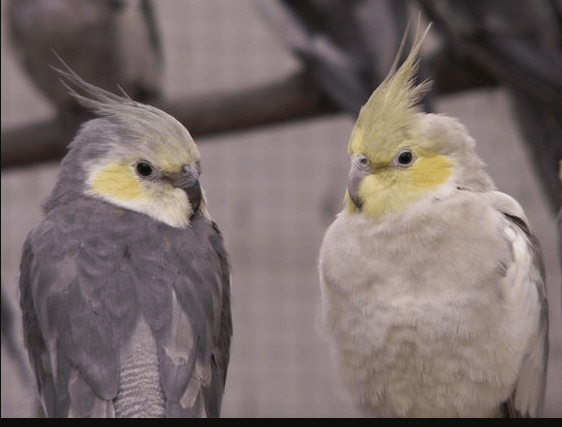
The wild-type mutation
This mutation is characterized by gray-colored feathers. A pronounced yellow mask and orange cheeks are characteristic of the male, moreover, this one has the underside of the tail united.
The female, on the other hand, has a much less yellow mask, it is generally a little gray, and has the underside of a striped tail. They also have pearls under their wings. In the photo above, you have a male on the left and a female on the right.
The variegated mutation
This mutation alters the melanin of the plumage. This is why it appears as spots of white or yellow. There is no visual difference to recognize a male from a female. In the photo, it is a cockatiel with a lot of melanin damage.
The cinnamon mutation
This mutation turns the gray of the wild type into brown/brown because it prevents the oxidation of melanin (responsible for the gray). The physical characteristics of males and females remain the same as for the wild-type mutation.
The white face mutation
As with the wild type, young subjects of this mutation cannot be sexed from an early age. It removes all psittacines (yellow and red pigments). In adulthood, the female, therefore, has no mask and a striped tail. The cockatiel male has a plain tail and a white mask.
In the face-white mutation the plumage is entirely gray-black and white because of the complete disappearance of psittacines (yellow and red pigments). At birth, the chicks are recognizable by their white down and not yellow.

Female face-white cockatiel mutation
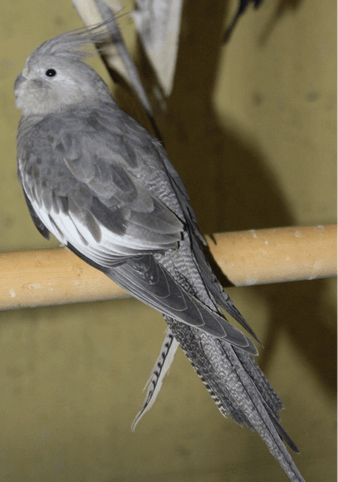
Young male face-white cockatiel mutation
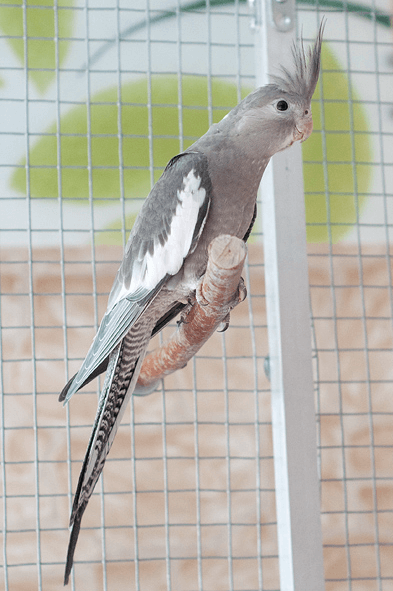
Cockatiel colours
The lutino mutation
This mutation removes all melanin. It will let psittacine appear on the entire body, which will therefore be yellow (more or less sustained) and white.
The underwing band (pearls) and the caudal striations are present in female lutino, but not very visible. These peculiarities are, once again, reliable after the first molt. (photos here)
The albino mutation
This mutation is a combination of info (melanin suppression) and white face. Females do not have streaks under the tail or pearls under the wings.
The pearl mutation (or opaline)
This mutation is always in “addition” to another and is characterized by beads on the back. The simplest combination is wild-type opaline. Young cockatiels cannot be sexed.
The males are recognizable because they lose their pearls from their first molt. There are other combinations, such as opaline variegated, cinnamon opaline, or even opaline white face.
Variegated mutation
The bronze-fallow mutation
The body is brown, and the eyes are red due to the non-oxidation of eumelanin.
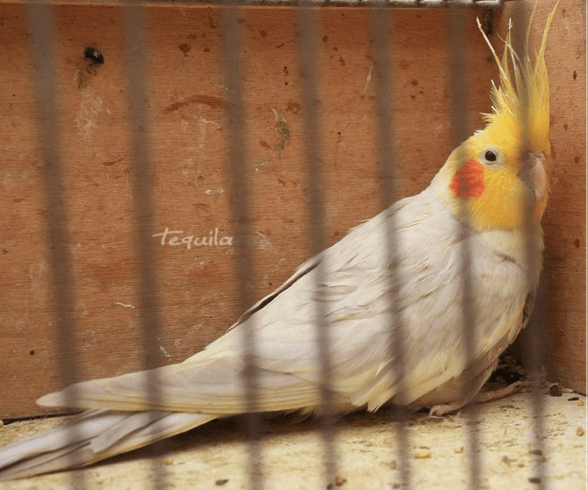
The ashy fallow mutation
The body is silvery, and the eyes are red due to a decrease in the level of melanin.

Cockatiel colours
Recessive sex-related mutations: cinnamon, yellow cheeks, opaline, and ino
The mutant character is carried on the pair of sex chromosomes. Here, the sex of the bird is very important since the mutant gene is transmitted only by the Z chromosome.
A recessive mutation linked to sex is transmitted visually from the father to the daughter. The female ZW cannot be a carrier, she is a mutant as soon as she receives the gene from her father.
The ZZ male can be a carrier. On the other hand, he only expresses the mutation if he receives the gene from both parents (from a carrier or mutant father, from an obligatorily mutant mother). If he only receives the mutant gene from one of his parents, he will be a carrier.
Cockatiel colours
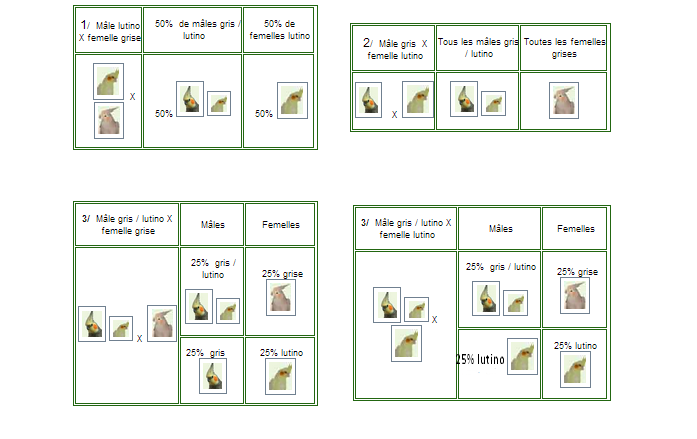
Genetic nest sexing
Their mode of transmission allows, in certain cases, the sexing of the young from the growth of the feathers, even from birth (in orange the birds sex in the nest):
Case 1: mutant male x normal female -> 100% carrier males, 100% mutant females
Case 2: mutant male x mutant female -> 100% mutants in both sexes
Case 3: carrier male x normal female -> 50% normal males, 50% carrier males, 50 normal females, 50% females mutants
Case 4: carrier male x mutant female -> 50% carrier males, 50% mutant males, 50% normal females, 50% mutant females
Case 5: normal male x mutant female -> 100% carrier males, 100% females normal
In the first case, our pair allows to sex 100% of the young in the nest and in the third case, it allows to sex half of the females.
A concrete example: if we breed an ino male with a wild-type female, we will have young wild-type males carrying ino (yellow down and black eyes at birth) and young ino females (yellow down and red eyes). You don’t even have to wait for the feathers to grow, we know for sure the sex of our chicks.
This method is also valid with combinations of mutations, it is very useful for sexing variegated birds without having recourse to DNA sexing.
The ino mutation
the plumage goes from bright white-yellow to bright yellow sustained, the cheeks are red, and the eyes purple because of the almost total disappearance of the melanin pigments (brown and black).
Sexual dimorphism exists but it is difficult to spot: dark yellow streaks on the tail of the female, a slight brown veil on the wings of the male.
Cockatiel colours

The opaline mutation

Young opaline mutation cockatiel
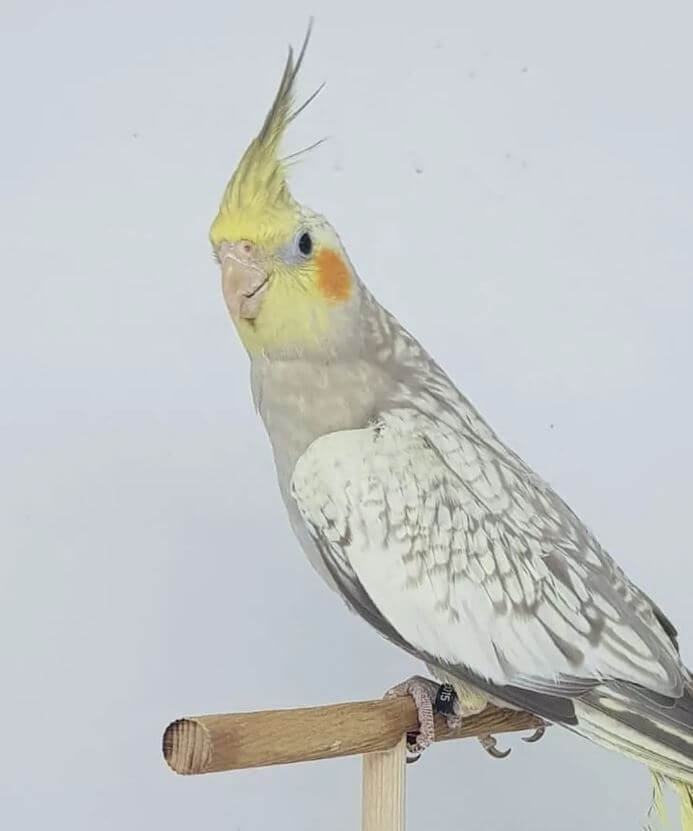
The cinnamon mutation
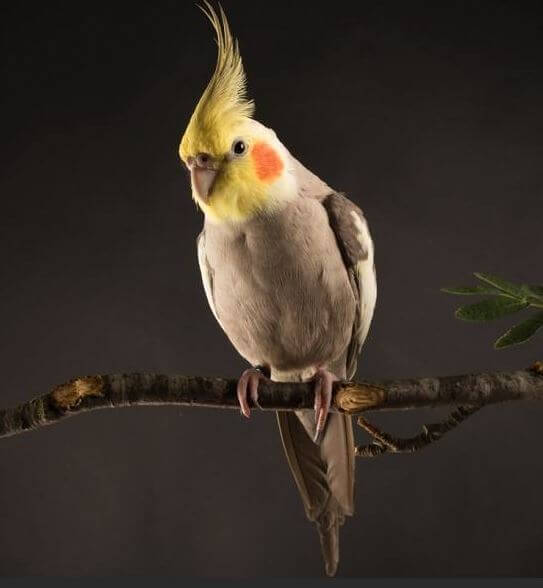

The yellow cheek mutation
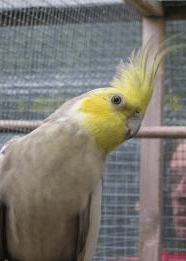
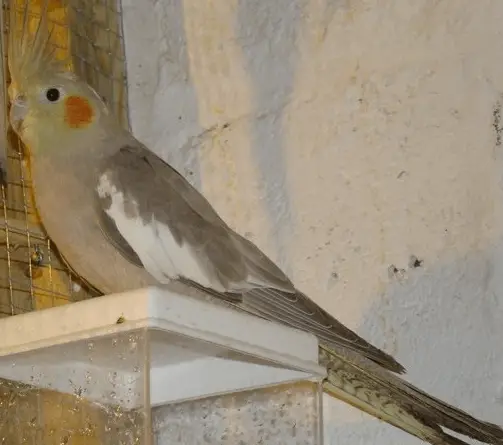
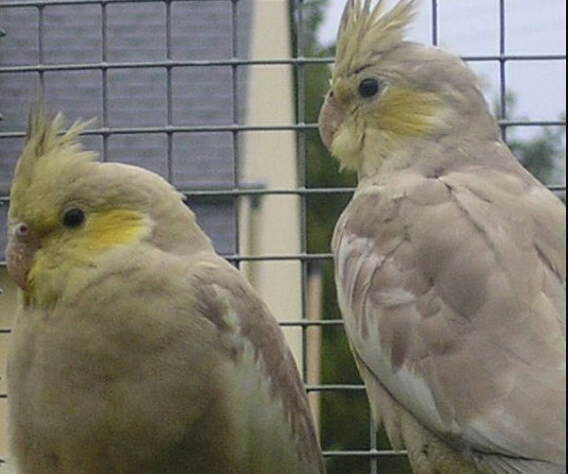
Dominant mutation incomplete: edged
This mutation has a very variable hue from one subject to another, which is why we can speak of Light Type, Medium Type, and Dark Type.
We also distinguish the single factor (SF) from the double factor (DF)
Single-factor: center of the feathers lighter than the edges (scale aspect), the head is slightly too much darker than the body.
Double factor: the plumage as a whole is lighter than in the “simple factor” until obtaining subjects “dirty white” wear the mask of the male is hardly detectable.
The melanin is pushed back towards the edge of the feathers, the head is generally less affected by this phenomenon.
Transmission :
Edged SF x normal: 50% edged SF, 50% normal
Edged DF x normal: 100% edged SF
Edged SF x edged SF: 25% edged DF, 25% normal, 50% edged SF
edged DF x edged DF: 100% edged DF
A bird cannot be a carrier of this mutation, it is mutant or not.

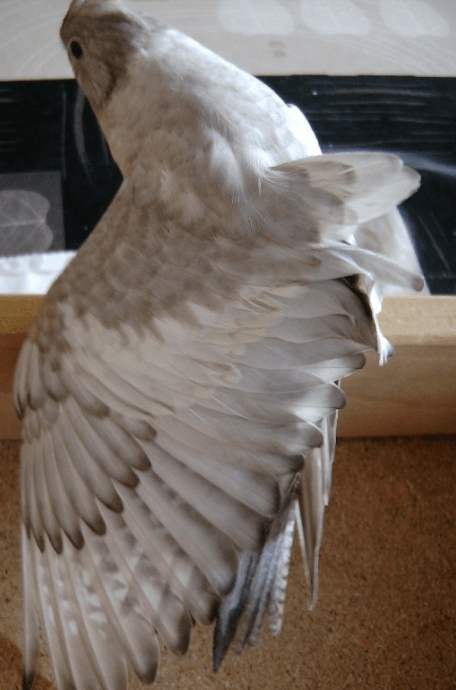
few exceptions, all mutations can be combined. Certain combinations are not judicious, like the mixture of white face and yellow cheeks for example (the mutation yellow cheeks would not be visible). It is also not recommended to mate together two lutino subjects (risk of obtaining young puny, with baldness) or two subjects yellow cheeks (brooding problems).
the body is entirely white, the eyes red. There is a total disappearance of melanin and psittacin. Dimorphism is visible to an informed eye: the male has a light brown veil on the wings.
Female cinnamon white face
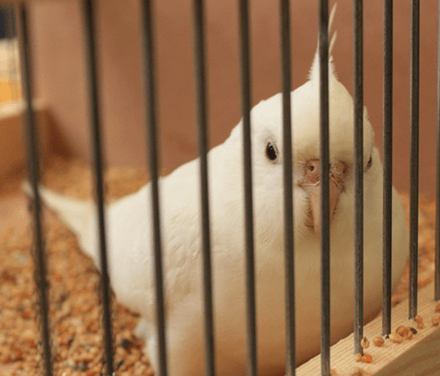
Female pearl white face white
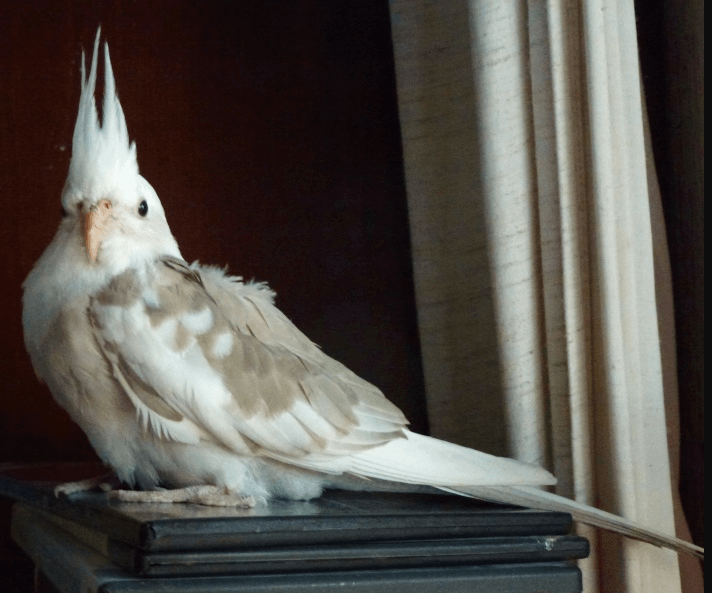
face cinnamon cockatiel
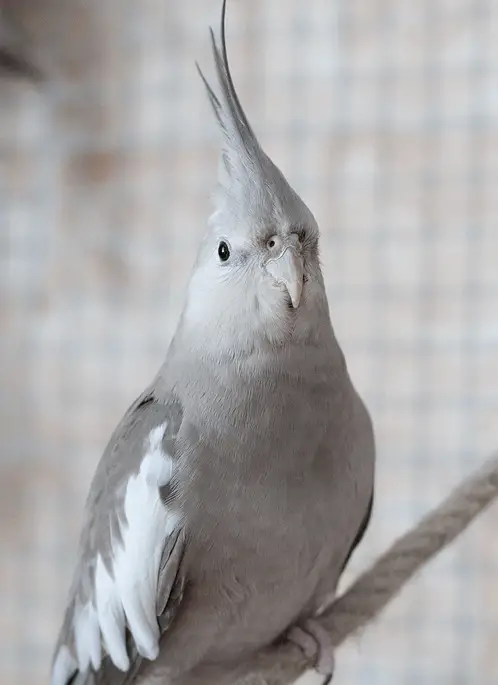
Male bronze fallow white

Male white face pearl
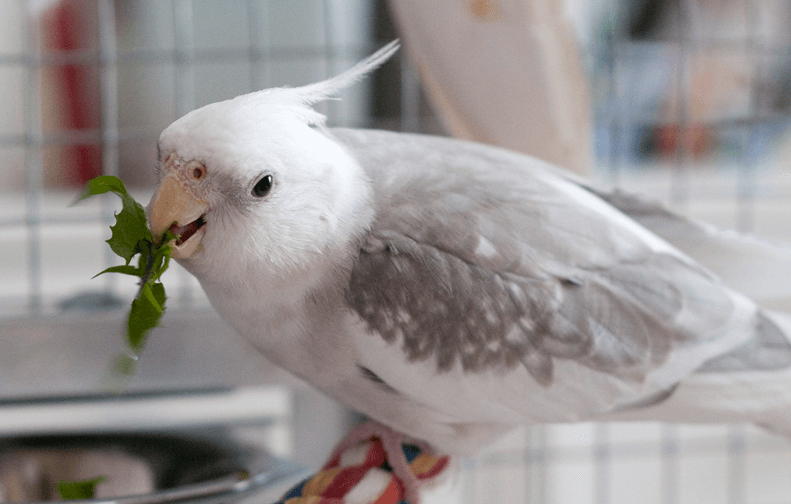
Female pearl cinnamon
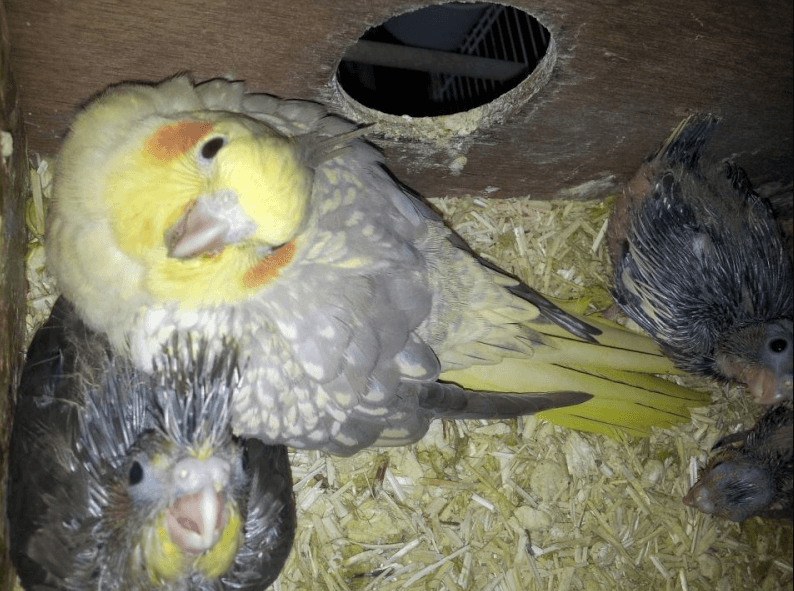
Female cockatiel pearl lutino

The different mutations in cockatiels
The male has gray plumage, a yellow mask, red cheeks, united underwings, and a tail.
The female does not have a mask, on the other hand, she has yellow spots under the wings and streaks on the tail.
The juvenile is identical to the female until the molt (6 to 9 months).
Cockatiel colors explained mutations and genetics
SOURCE:TielZone




















